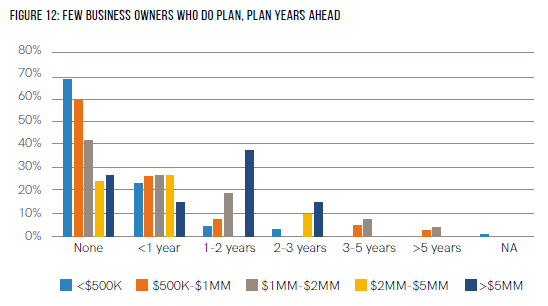 We often get asked how owning a facility (versus leasing one) affects the sale of a company, so I dug through our 17 years of business sale transactions involving seller-owned real estate to look for patterns. And the archives didn’t disappoint. I found five common deal scenarios that shed light on this question.
We often get asked how owning a facility (versus leasing one) affects the sale of a company, so I dug through our 17 years of business sale transactions involving seller-owned real estate to look for patterns. And the archives didn’t disappoint. I found five common deal scenarios that shed light on this question.
But first, here’s the short answer. Owning your real property is likely to increase the demand, transferability and selling price of your business. Why? When you control the property, you can offer business buyers more options. Now let’s discuss the scenarios …
5 Real Estate Options Available to Business Owners Upon Exit
Option 1: Lease and hold the real estate
This is a popular choice with seller clients who want a source of retirement income and will soon have more time to manage investments. They are comfortable leasing and managing a property that they know well, and they believe in the tenant (their business!). If they decide to sell the property in the future, they will likely have a ready buyer. (In a few cases the decision to hold was necessitated by poor tax planning by clients and their CPAs. Don’t let that happen to you.) When a business is location dependent, astute buyers will want a long term lease. Without one, they probably won’t pay as much for the business or get financing for the purchase. Leasing also reduces a buyer’s cash needs, which expands the pool of potential buyers for your company.
Option 2: Sell the real estate in a concurrent transaction
Buyers like to own real estate for the same reason our seller clients do—they see it as a good long term investment. Selling is popular with our clients who want to reinvest in a property or real estate partnership with higher returns, less risk or fewer management headaches, often through a 1031 exchange. Or, they just need or want the cash. This scenario is almost always preferred by both parties when a property has specialized improvements (think nursing home, winery, self-storage) or when relocating the business is risky (think preschool, retail). Buyers will generally pay more for enterprise goodwill (a.k.a going concern value) when they can own and control the underlying property. And sellers usually don’t want to hold onto a special use property because if the buyer fails, they could be stuck without a tenant for quite a while.
Option 3: Lease the real estate with an option to purchase
Sometimes a buyer is cash limited or wants to use the cash available to grow the business. Or, maybe the cash flows don’t support bank financing and the seller has immediate cash needs and can’t finance. Or perhaps business conditions are such that the buyer needs time to decide whether to keep the business in that location. In scenarios like these the best option for the real estate may be a lease with an option to purchase. Sellers can enjoy a few years rental income while the buyer builds cash reserves or stabilizes business performance to the point where banks are willing to lend. Lease-options can be structured in many different ways to align the interests of the parties.
Option 4: Lease the property, then sell it separately as a leased investment
Some business buyers don’t want to own real estate. In my experience, most public and larger private corporations and private equity buyers prefer being able to deduct an entire lease payment rather than just the interest portion of a mortgage payment. For our seller clients, who are looking at a short-term hold, getting the lease terms right is critical. Buyers of leased investments are usually sophisticated investors who are easily turned off by non-market terms. We advise sellers to make the new tenant (the business buyer) aware that they plan to sell the property so that the tenant is happy and cooperative when the property goes on the market.
Option 5: Sell the business, then sell the property, unoccupied and unleased
Our seller clients sometimes go this route to maximize total value when the highest and best use of their property is no longer the existing business use. Sometimes their business has simply outgrown the property. In strategic acquisitions and mergers, facilities are often redundant or sub-optimal and therefore not purchased. I hate to say it, but we’ve sold several California manufacturing and distribution businesses to buyers that rented our client’s facility for a few months until they could transfer operations out of state. The beauty of this option for sellers is that they will now be able to expose the real property to a broader pool of potential buyers, including owner-users and re-developers.
Exit Strategies only sells real estate when packaged with a business. After selling businesses under options 4 and 5, we refer clients to commercial brokers with better access to private and institutional net-lease investors or owner-occupied buyers.
Other Common Questions
- Owners of small businesses often ask, should I sell the property first? The answer is almost always no. As a rule, commercial properties are more marketable than small businesses. For most commercial and industrial properties this holds true with or without a tenant.
- When maximizing value is a seller’s primary objective, their first question should be, is the total value of my business and property higher if I sell them as a package or sell them separately? Every situation has to be evaluated on its own merits.
I’ll finish with a quick story …
A number of years ago we sold a B2B distribution business in a volatile low-margin industry. Our client’s preferred option was to hold and lease the property for retirement income, but he was also open to selling and reinvesting the proceeds in another property. I should mention that the current use of the property was the highest and best use. After several months on the market we had only one strong offer for the company, and that buyer insisted on purchasing the real estate as well. We negotiated a package deal that maximized total value to our seller client. During the negotiation we connected our client with a commercial broker who specialized in leased investments. After closing, our client happily 1031 exchanged into a commercial property with national tenants and professional management. He was also able to diversify his real estate holdings outside of California. The moral is, it is good to be able to offer options.
If you own a business with real estate, plan ahead and involve an M&A advisor/broker for best results. And be flexible. The deal you envision may not be the best deal the market has to offer.
• • •
Exit Strategies Group, Inc. is an M&A brokerage and business valuation services firm serving closely-held businesses from offices in California and Portland Oregon. Al Statz can be reached at 707-781-8580 or alstatz@exitstrategiesgroup.com.



 Cash Flow
Cash Flow
 We often get asked how owning a facility (versus leasing one) affects the sale of a company, so I dug through our 17 years of business sale transactions involving seller-owned real estate to look for patterns. And the archives didn’t disappoint. I found five common deal scenarios that shed light on this question.
We often get asked how owning a facility (versus leasing one) affects the sale of a company, so I dug through our 17 years of business sale transactions involving seller-owned real estate to look for patterns. And the archives didn’t disappoint. I found five common deal scenarios that shed light on this question.
 Cashing in on the sale of your business is the final reward for many years of dedication and hard work. Then your CPA tells you how much you will owe in taxes. It’s a shock, but there’s a relatively new reinvestment opportunity that may help trim your tax bill …
Cashing in on the sale of your business is the final reward for many years of dedication and hard work. Then your CPA tells you how much you will owe in taxes. It’s a shock, but there’s a relatively new reinvestment opportunity that may help trim your tax bill … Assembly Bill 5 (AB5), signed into law last month by governor Gavin Newsom, will impact the valuation of many small businesses in California that have grown to depend on independent contractors. For impacted owners intending to sell in the near term, this new law may require a change of plan.
Assembly Bill 5 (AB5), signed into law last month by governor Gavin Newsom, will impact the valuation of many small businesses in California that have grown to depend on independent contractors. For impacted owners intending to sell in the near term, this new law may require a change of plan. Let’s say you have a headache and you’re walking down the pain relief aisle of your local Walgreens pharmacy. You see
Let’s say you have a headache and you’re walking down the pain relief aisle of your local Walgreens pharmacy. You see 



